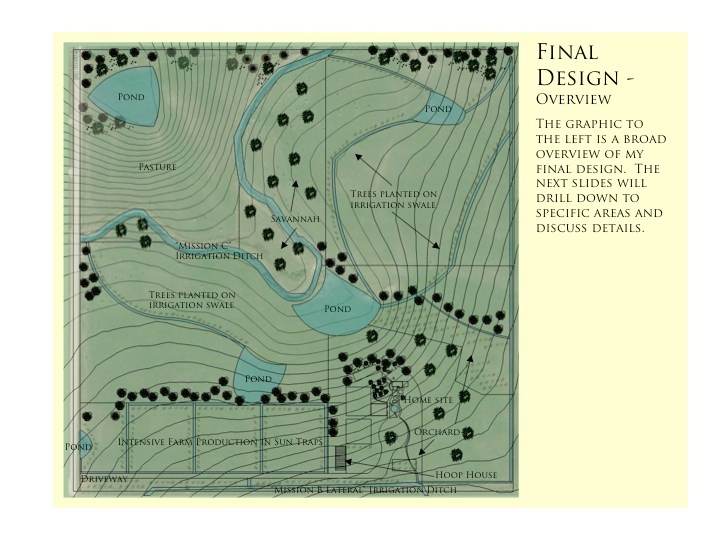Turner,
Great to see a map of your site. Thanks for posting.
A short answer to stocking rates on a particular piece of land is the ubiquitous Permaculture answer of "it depends"

I live in sheep country here in the Willamette Valley in Oregon, and most of my experience is in visiting my friend's 1000 acres where he runs sheep in a mob grazing pattern over 3 properties. Three main variables here are the ability to irrigate pasture because of our dry summers, soil drainage and quality and it's ability to grow pasture and maintain animals during our soggy winter and spring, and shelter from extreme wind and rain during lambing season. In order to design a system for these 3 factors, we look to the element of the Permaculture design system called "scales of landscape permanence", where we look first at climate and landform to understand the bigger seasonal and topographical influences we are working within. Then we look at design for water flow, then access and circulation, then vegetation and on to the detailed placement of all the elements of our homestead: structures, fencing, specific soil treatment.
So for your property, we start by zooming out and seeing how it sits within the watershed and greater landform. Where is water flowing onto and leaving the site? How does the shape of the land and the flow of water clue us in to how soils were formed and are distributed in the area? How does the landform interact with the sun to create areas with different solar aspects, hence varied water and soil conditions?
The design of a property of your size becomes somewhat formulaic when using the keyline system. Placement of ponds for storage and the gravity irrigation systems, cultivation patterns to enhance absorption of water and hydration of the land, and placement of shelter belts to create a perennial plant infrastructure that helps with soil fertility, breaks wind, absorbs water and creates potential for multiple yields.
Here is a picture from one of my student's designs that illustrates the potential patterning of water and vegetation that may be applicable to your site:
and here is a google earth image of one of the original keyline farms in Australia developed by PA Yeomans in the 1950's that shows the integration of water catchment and storage and tree belts:

So with the approach of designing from patterns to details, we look at the macro influences on a site, and zoom in to placing particular design elements to maximize stocking rates by increased irrigation potential, increased soil fertility hence nutritious abundant pasture, and shelter from the elements and browse from trees and shrubs.





 1
1


























































